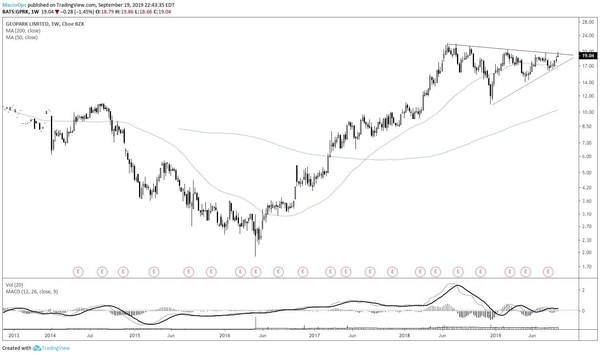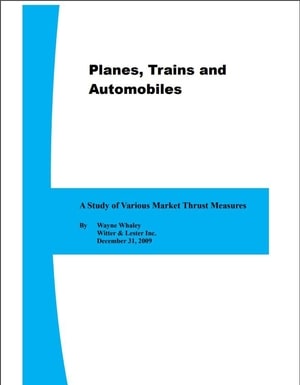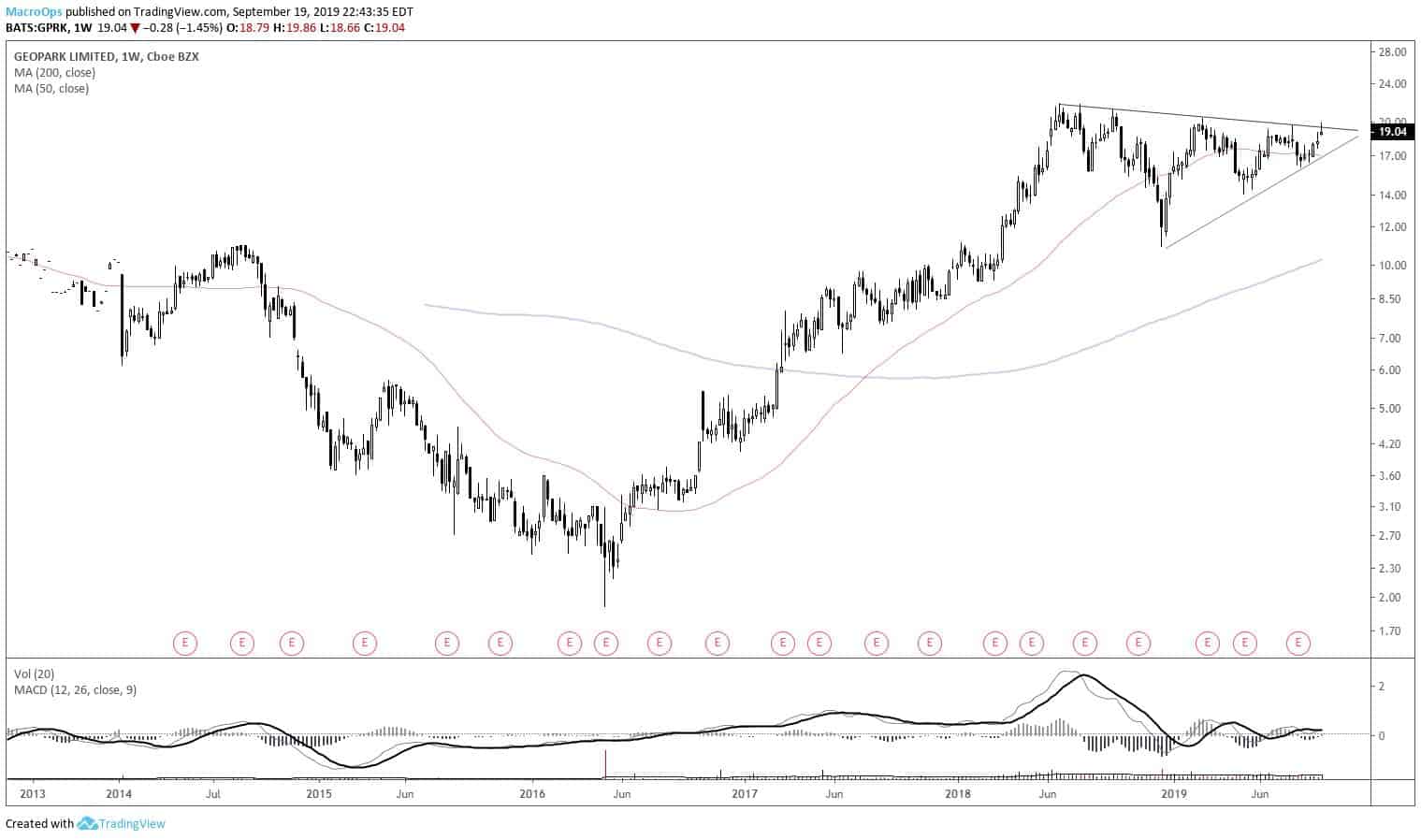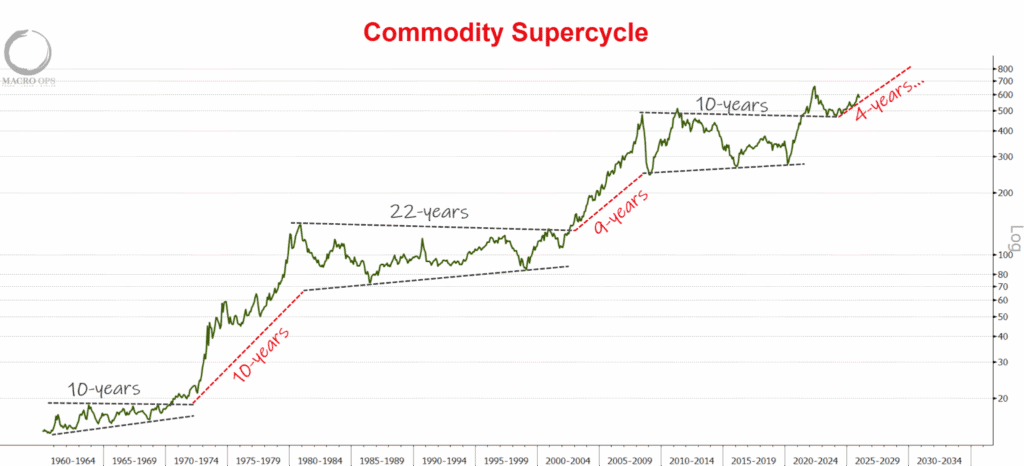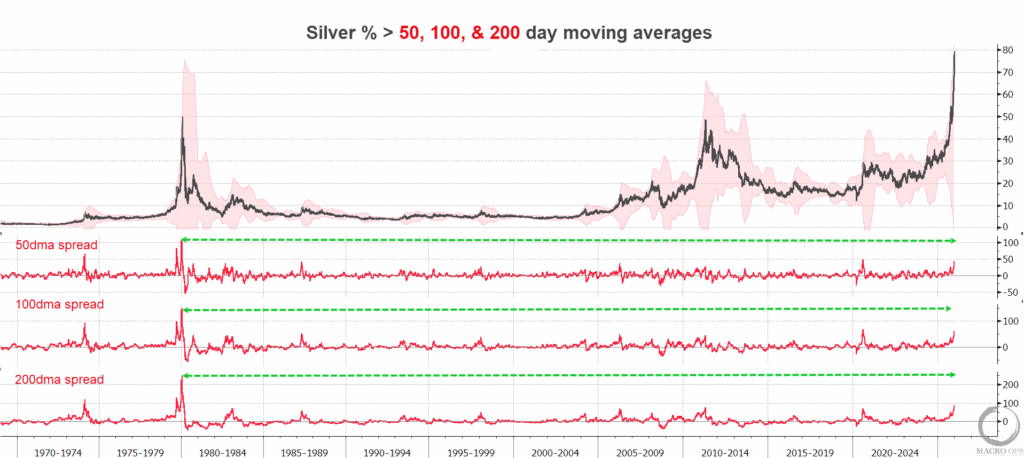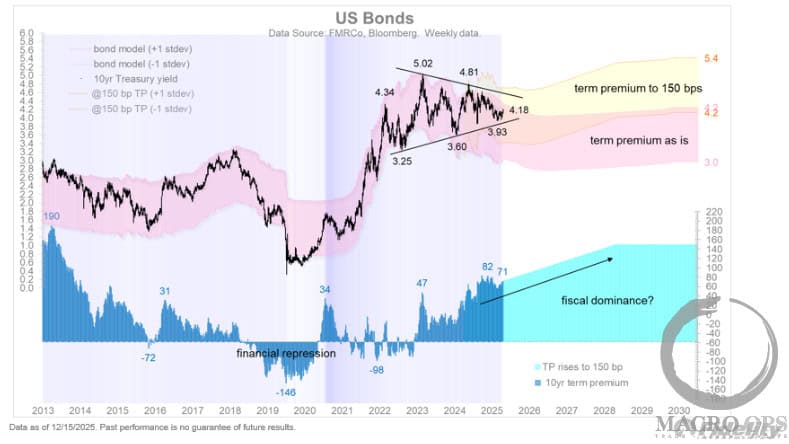Alex here with your latest Friday Macro Musings.
Latest Articles —
A Monday Dirty Dozen [CHART PACK] — We look at technical and sentiment indicators showing short-term overbought levels in US equities, incredibly low hedge fund exposure to stocks, the ‘pain points’ for CTAs in bonds, really cheap European banks and more.
Oh, How Quickly The Narrative Pendulum Swings! — I share a video that illustrates how quickly changes in price lead to changes in sentiment and the narratives behind them.
Much Ado About Nothing: Repo Rates and Doom Narratives — I dismantle the popular doom narrative that’s spawned around the repo market.
Market Brief: Value in Energy — Cover the latest BofAML Global Fund Manager Survey, the ripe setup for a major bullish move in stocks (after a pullback first), the drone attack in Saudi Arabia, and the deep value on offer in energy [Collective Member access only].
Trade Intel: FOMC Update and More Bad News for Bears — Talk FOMC and more repo + the latest data that totally annihilates the bear thesis on the US economy [Collective Member access only].
Articles I’m reading —
The Jerome Levy Institute put out a monster of a report titled “Bubble or Nothing” where they discuss the balance sheet trap that the US (along with the rest of the developed world) now finds itself in. I’ve written on this subject a number of times over the last two years (here’s my most recent post from April) but this report really goes into the troubling economic weeds in which DM economies are trapped.
The problem?
Dangerously leveraged balance sheets (ie, too much debt).
The solution?
Short-term, we can keep things going by further expanding our balance sheets. But… this just increases the problem. Also, there’s a saturation point in which more debt won’t move the needle — we just don’t know where that point is. If we stop, then the whole thing craters in on itself and things get… bad. Hence the title “Bubble or Nothing”.
It’s the unfortunate consequence of being at the tail-end of the Long-Term Debt Cycle. I wish I could say the report offers some viable solutions for us to safely remove ourselves from this trap. It doesn’t. Either way, it’s critical that as investors we understand the large underlying dynamics of what’s going on so we can learn how to protect ourselves, and maybe even make a profit when things finally turn. Here’s a link to an executive summary of the piece and the link to the full report.
I highly recommend giving the full report a read or at least take the time to give it a good skim through. Here’s a section from it.
“The disproportionate expansion of private sector balance sheets profoundly altered the parameters of the choices decision-makers faced, compelling them either to accept lower returns and other poorer outcomes than they had come to expect or to take actions that increased their financial risk. For some, this may have been a Hobson’s choice, a choice that was really no choice at all, since they may have deemed the sacrifices associated with avoiding bigger risks to be unacceptable. Even if no individual’s behavior was forced, it is fair to say that in a large population in which individuals make varying choices along a continuum, something that alters the relative attractiveness of the choices does change the collective outcome—it does force a change in collective behavior. Accordingly, increasing balance-sheet-to-income ratios unequivocally caused increased risk-taking.”
If you’ve been closely following our work then you know we’ve been broadly bullish on the market since the start of the year. And, in fact, we think we’re about to see another major bull leg higher (possibly, after a small dip over the next few weeks).
You might be asking: how am I so bullish considering the above? The answer is that it’s a matter of timeframe. The turning of the debt cycle is “background timing” information. It’s something that’s not yet actionable but will be someday. The bullish impulse we’re expecting is strategic timing and is primarily influenced by what the market itself is saying.
The best opportunities are when all timeframes align; from the background all the way down to the tactical. That doesn’t happen often.
Moving on… Here’s an excellent post from @MacroCharts laying out the technical bull case for global stocks (link here). He makes some of the prettiest charts in the game and points out the major breadth thrusts we’re seeing right now across a number of markets. I agree on all points and think the next 6-12 months are going to be wild. Here’s the summary from the post.
“The weight of the evidence suggests Global Markets are in broad alignment and starting a potential historic Bull Market extension rally. Short-term moves notwithstanding, markets are sending a powerful message of strength which should be respected.
Historically, prior Bull Markets typically ended with epic rallies, usually lasting several months and with every region in the world participating. While it’s impossible to know if this Bull Market will follow the same script, one thing seems absolutely clear – almost no one is ready for such an outcome.”
Lastly, I enjoyed this write-up on Cobalt 27 (a cobalt mining company) by Massif Capital (link here). They’ve done some really good work on the battery supply chain (link here) that I also recommend reading. Energy storage is going to become a huge market over the coming decade. Governments across Europe are planning on making “renewable energy” a key focus in their turn to greater fiscal spending and investment and battery story will be a critical component of that.
If you prefer listening over reading then here’s a recent podcast they did on the cobalt, nickel, and lithium markets (link here).
Oh and one more thing. The Sante Fe Institute offers some amazing online classes, some free, some paid. Most of the classes center around the institute’s specialty which is complex and dynamic systems, of which the market is one.
They have a free course launching on Oct 1st titled “Introduction to Dynamical Systems and Chaos”. Here’s the link for those of you interested (link here).
Charts I’m looking at—
These are just two of the many great charts included in the Levy report. Both illustrate how, beginning in the 80s, the growth in debt began exceeding investment; meaning, debt was being used for financial engineering which has driven asset price inflation.
Video I’m watching —
This week I came across an interesting Ted Talk titled “Your brain hallucinates your conscious reality”. The talk is given by Anil Seth, a professor of Cognitive and Computational Neuroscience at the University of Sussex.
Seth dives into the fascinating research that’s being done in neuroscience around the concept of consciousness and what’s actually taking place in the brain when we interact with what we call “reality”. According to Seth, we’re all hallucinating all the time and reality is just what we call the hallucinations that we agree upon. Give it a watch, it’s less than 20-minutes long (here’s the link).
Podcast I’m listening to —
If you own bank stocks or are thinking about owning bank stocks or are just curious as to why they’ve been doing so poorly, then give this OddLots Podcast with fund manager John Hempton a listen (here’s the link).
Book I’m reading —
@MacroCharts shared a short white paper titled “Planes, Trains and Automobiles: A Study of Various Market Thrust Measures” by Wayne Whaley. If you’re at all interested in learning about some of the various measures and indicators of market breadth, then I recommend giving this paper a read. It’s short, only 14-pages long, but chock-full of good information on breadth analysis (here’s the link).
Trade I’m considering —
I like energy stocks here. There’s a number of reasons why (1) they tend to outperform later in the cycle (2) capital discipline has finally been forced upon the industry (3) the capital cycle strongly favors a major industry upturn (4) it’s the most hated and least own area of the market (5) conversely, there’s incredible value in the space if you know where to look (6) its dividend yield to treasury yield spread is the highest amongst all the sectors and is at record levels (7) it now makes up less than 5% of the index for the first time ever (8) I love catching falling knives…
One of the companies I like in the space is Geopark LTD (GPRK). They’re an E&P that operates in Chile, Colombia, Brazil, Argentina, and Peru. They trade at less than 4x EV/EBITDA and have a very nice looking chart.
I’m still digging into this one but there’s a lot to like, especially the current technical setup.
Quote I’m pondering —
I was prepared for a regime change, whereas other people were acting within a prevailing regime. And that is where I think my awareness that conditions can undergo revolutionary change was useful. ~ George Soros
Are you prepared?
If you’re not already, be sure to follow me on Twitter: @MacroOps. I post my mindless drivel there daily.
Have a great weekend.

